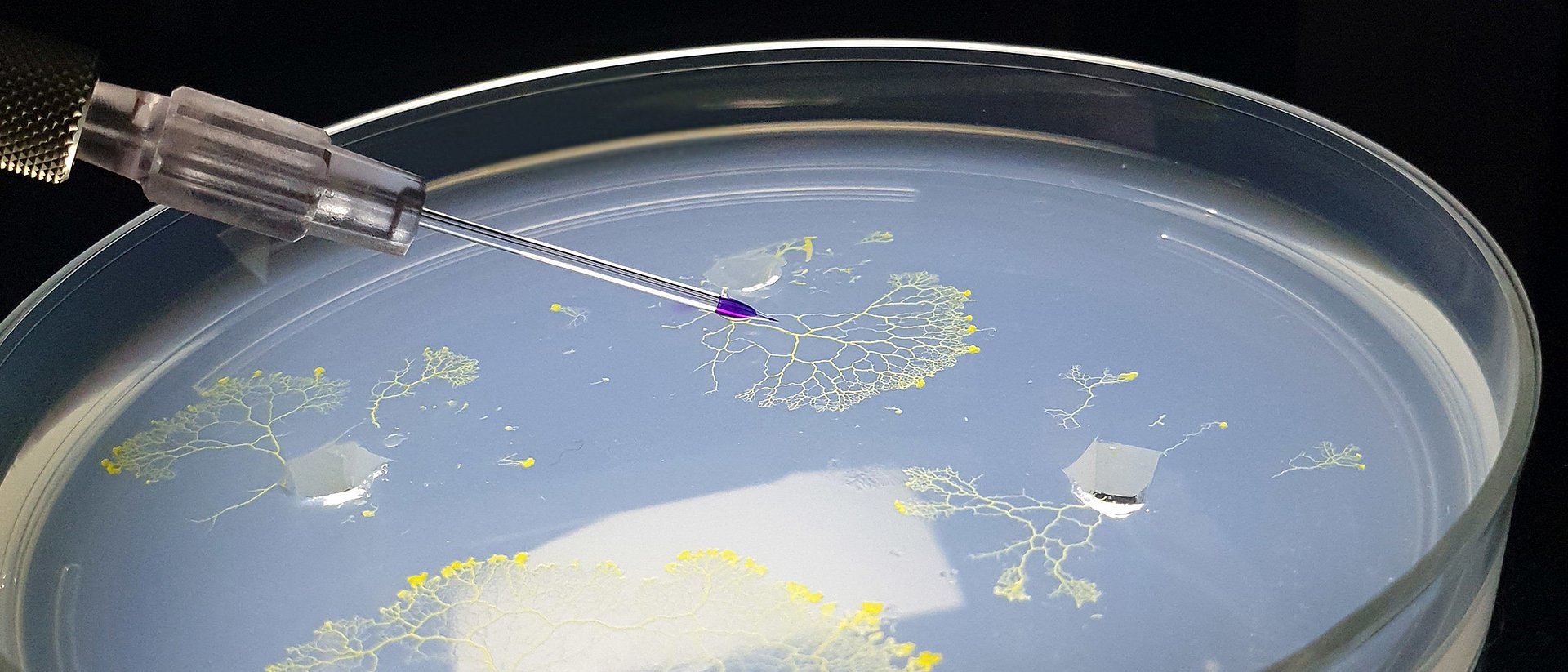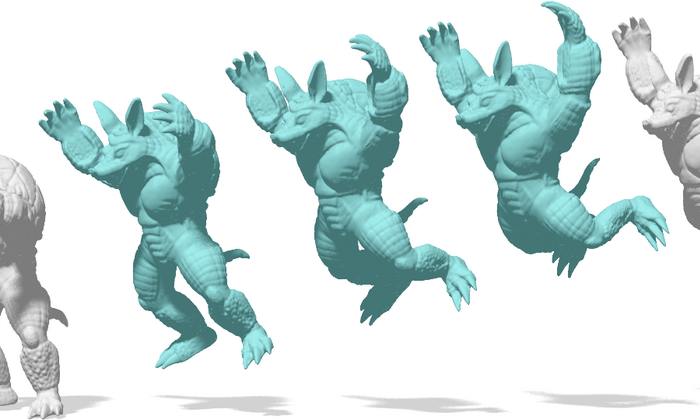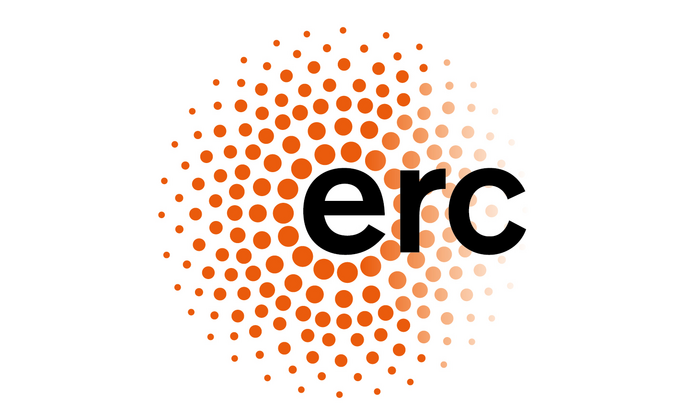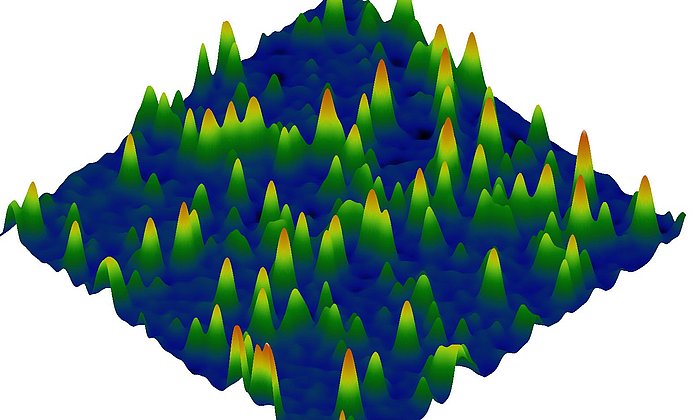European Research Council awards five starting and two proof-of-concept grants
ERC supports pioneering research projects at TUM

To date, researchers at TUM have received a total of 135 of the renowned grants from the European Research Council (ERC). These are awarded in different categories every year.
Starting grants aim to facilitate the implementation of new research approaches by excellent young scientists. They are endowed with up to two million euros.
Proof-of-concept grants are awarded to scientists who want to assess whether their ERC research projects might lead to marketable innovations. As an entrepreneurial university, TUM values this aspect of research and specifically promotes start-ups by researchers and students.
Prof. Dr. Karen Alim (Physics; Starting Grant)
Fluid flows through tubular networks like our bloodstream are vital building blocks of life – from simple slime molds to mammals including humans. They not only transport substances and signals but can also dynamically adapt their network architecture to new requirements. These kinds of changes are often memorized in the network for over long periods of time.
In the “FlowMem” project, Prof. Karen Alim aims to identify the physical principles behind the dynamic memory of such changes in network architectures and how they can be controlled. Knowledge of these physical mechanisms provides the basis for new approaches to topics ranging from the treatment of vascular diseases and tumor development to the development of self-optimizing porous materials in fuel cells.
Prof. Karen Alim is professor for Biological Physics and Morphogenesis at the Physics Department of TUM and will remain Max Planck group leader at the Max Planck Institute for Dynamics and Self-Organization in Göttingen until 2022.
Dr. Francesca Bellini (Physics; Starting grant)
Physicists currently assume that dark matter in our universe consists of WIMPs, weakly interacting massive particles. A clear sign of the existence of WIMPs would be the observation of anti-nuclei in cosmic rays, which could form after the annihilation of two dark matter particles. However, there is another production possibility for anti-nuclei: high-energy collisions of cosmic particles, especially protons, with the interstellar medium. Therefore, it is currently unclear whether the light anti-nuclei observed by the AMS-02 experiment aboard the ISS are really resulting from dark matter.
In the ALICE experiment at the Large Hadron Collider at CERN in Geneva, physicist Francesca Bellini will systematically investigate the production of rare anti-helium in collisions of protons and lead nuclei. In this way, Francesca Bellini pursues in her ERC grant project CosmicAntiNuclei to predict the anti-helium background to be expected for ongoing and next generation experiments. In the future, it thus will be possible to distinguish if anti-nuclei in space come from dark matter annihilation or cosmic ray background.
Francesca Bellini has been analyzing data obtained with ALICE for more than ten years, most recently as a Marie Curie Fellow at CERN. The ERC team lead by Dr. Francesca Bellini will be hosted by the research group for Dense and Strange Hadronic Matter of Prof. Laura Fabbietti at the TUM Department of Physics.
Dr. Dominik B. Bucher (Chemistry; Starting Grant)
Biological experiments typically examine cell aggregates. But processes such as the development of drug resistance or of tumors always begin with changes in individual cells. Due to its high chemical specificity and because it is non-invasive, nuclear magnetic resonance spectroscopy (NMR) is one of the most important analysis tools in (bio) chemistry. However, its sensitivity has so far not been sufficient to investigate the processes in individual cells.
In his project "SingleCellQNMR" Dr. Dominik Bucher aims to overcome this constraint by developing a technology for the examination of single cells using magnetic resonance methods. To do this, he plans to employ and advance new types of diamond quantum sensors that can detect NMR signals even in the smallest sample volumes, for example in individual cells.
Dr. Dominik B. Bucher is a TUM Junior Fellow and head of the Emmy Noether junior research group “Biomolecular Quantum Sensing” at the Chair of Physical Chemistry at the Technical University of Munich.
Dr. Veit Buchholz (Medicine; Starting Grant)
Recent findings suggest that an organism's immunological memory may be based on stem cell-like mechanisms. Individual immune cells generate both short-lived effector cells and long-lived memory cells as offspring. In order to better understand the regulatory principles behind this process, Dr. Veit Buchholz developed technologies with which he can precisely map the fate of individual cells and their offspring throughout an adaptive immune response.
In his project “SCIMAP” he plans to combine these technologies with single-cell RNA sequencing, genetic reporter systems and continuous imaging of living cells in order to investigate T cell exhaustion during chronic infections or the development of immunological memory by Natural Killer cells. The aim of this work is to identify new molecular targets and therapeutic strategies to strengthen immunity against infections or malignant diseases.
Dr. med. Veit Buchholz is a group leader at the Chair for Medical Microbiology, Immunology and Hygiene of the Klinikum rechts der Isar at the Technical University of Munich.
Dr. Giulia Palermo (Physics; Starting Grant)
Allostery is a fundamental property of proteins in which smaller molecules change the conformation of the protein and thus influence the active center. In her project "Allosteric-CRISPR", Dr. Giulia Palermo will pay particular attention to the CRISPR-Cas9 system, which is the centerpiece of a recent genome editing revolution and whose underlying signal transmission is still poorly understood.
With a broad repertoire of methods, Giulia Palermo aims to investigate the allosteric communication network and the role of allostery in the dynamics of CRISPR-Cas9 and its implication for genome editing. The research methodology which will be developed is intended to advance future research on large nucleoprotein complexes and contribute to the development of improved genome processing tools.
Dr. Giulia Palermo will conduct the research in collaboration with the “Biomolecular Dynamics” group of Prof. Martin Zacharias in the Physics Department at TUM.
Prof. Dr. Jan Kirschke (Medicine; Proof of Concept Grant)
Around the world, an osteoporotic fracture occurs every three seconds. In Europe alone the economic burden is estimated at EUR 37 billion per year. Osteoporosis is a preventable and treatable disease when diagnosed at an early stage. But the current screening methods are neither sufficiently available nor accurate enough.
Prof. Jan Kirschke hopes to close this gap with his proof-of-concept project “BoneScreen” and provide an accurate, cost-effective screening method. The software uses computed tomography data to automatically calculate the volumetric bone mineral density (vBMD), the most important indicator of a patient's fracture risk. In addition, the project aims to initiate the establishment of a company to market this solution.
Prof. Jan Kirschke works in the Department of Interventional and Diagnostic Neuroradiology of the Klinikum rechts der Isar at the Technical University of Munich. He already received an ERC Starting Grant, iBack, in 2014. BoneScreen builds of the results of this research.
Prof. Xiaoxiang Zhu (Department of Aerospace and Geodesy; proof-of-concept grant)
Ever more people are moving to cities, an enormous challenge for urban planning and logistics. Earth observation satellites have been orbiting the earth for decades, generating huge amounts of data. Prof. Xiaoxiang Zhu uses this data to observe the global urbanization process. Together with her team, she is developing innovative AI methods and big data analytics solutions that facilitate the evaluation of the data.
In their project “AI4SmartCities” the focus lies on practical applications of the new technology. For example, changes in buildings, city districts or traffic flows can be visualized. This is a prerequisite for intelligent urban planning tools and smart traffic management solutions, but also for building damage early-warning detection systems. The development of a business model for a spin-off that provides data for these kinds of smart city applications is planned.
Prof. Xiaoxiang Zhu is professor of Signal Processing in Earth Observation at TUM, heads the “EO Data Science” department at DLR and has also held the position of Director of the Munich Future AI Faboratory “AI4EO” since May 2020.
Technical University of Munich
Corporate Communications Center
- Dr. Andreas Battenberg
- battenberg@zv.tum.de
- presse@tum.de
- Teamwebsite


